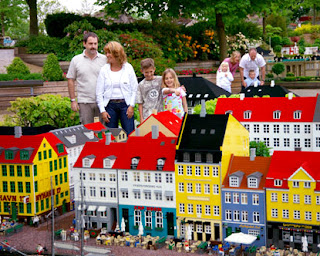 |
ROYAL PALACE |
Norway is known for its fjords and Midnight Sun. The population of 4.3 millions are Norwegians and Samis. The capital is Oslo which had been rebuilt many times. In 1624 there was a Great Fire and it had been restored and renamed Christiania until 1924. The majority of Norwegian people live in towns. Norway has mastered their harsh environment and is becoming a most prosperous nation in Europe.
Norway's country is mainly
mountainous. It is on the western side of the Scandinavian Peninsula. All along
the coast are thousands of deep, narrow sea-inlets which are called fjords, The
longest is the Sognefjords which measures 180km and has a depth of 1305m at its
deepest point. Sweden, Finland and Russia border on Norway on the eastern side.

FEIGEFOSSEN,
SOGN OG FJORDAN
SOGN OG FJORDAN
| RONDESLOTTED RONDANE NATIONAL PARK EASTERN NORWAY |
 |
| MUSCOX LOW ALPINE TUNDRA AT DVREFJELL |
Norway also owns a group of eight
islands which are about 657km north of the Norwegian mainland called Svalbard.
Two of the main islands are Jan Mayen, in the Greenland Sea and Svalbard. The
entire area is one and a half times the size of Denmark. Spitzbergen is the
largest and has a size of 39,000 sq km. It lies near the Gulf Stream which
opens the sea ice all year round and therefore it is possible to ship the mined
coal out continuously.
The smaller islands could be as many
as 150,000 which lie along the coast of the country. They are great protection
from the North Sea to Norway's great fishing vessels.
The islands have a population of
about 3400 and have mainly coal mines. Even the harshness of the environment
has not stopped the adventurous tourists and is becoming a popular destination.
In the highlands of Norway are
glaciers and the fast flowing rivers from there are producing hydroelectric
power which is a natural and import source. Not many people live in those mountainous
areas. They mainly live in the flatter south-west of the country and mostly
around Oslo.
Norway has severe winters in the
north with always heavy snow fall. The ports on the west coast are not ice-bound
because of the Gulf Stream. The warm air from the Gulf Stream and water drifts
across the Atlantic Ocean from south-west to north-east.
Norway is so far north that the Sun
disappears below the horizon during December and January. Therefore there is very
little daylight in winter in Norway.
However, there is another side to it.
Between June and July the Sun never sets and Norway earned the northern
Scandinavian name 'Land of the Midnight Sun'
CLIMATE, POPULATION, EDUCATION.
Due the harsh weather conditions many
areas of Norway are barren. However, rowan and silver birch trees grow on
higher ground. The country also has large forests of pine and spruce trees. In
the summer a carpet of wild flowers spread across the valleys. There are
also yellow cloudberries, blueberries and cranberries growing and almost to be
found everywhere. Norway has a great wildlife with lemmings, foxes, deer and
elk in abundance. There are also bears, wolves and lynxes but not as
widespread.
The native Sami people still herd
reindeer in the far north. The Sami people are in contrast dark in colour and
rather short while the Nordic people are tall, blond and blue eyed. The Nordic
people are the majority of the Norwegian population. 90% of the population are
part of the Lutheran Church. The Sami had and still practicing their
traditional religion.
The children have to attend school
from the age of seven to 16 and then, if they wish, can go on to higher
education. Norway, like the other Scandinavian countries, has a system which is
called 'folk high school'. It is for adults and they can attend regardless of
their qualifications. Norway has a very high standard of living. The welfare
system provides medical treatment for everyone. The pensions and benefits are
also very generous.
ECONOMY
Fishing was always part of Norway and
it is the oldest industry. However, since so many countries are
fishing the fish stock a reducing in the North Sea and strict controls were
necessary. More and More fish farms are being established. Despite a ban on whale
hunting, Norway started again to hunt whales and their was a great outcry.
During the '70s oil and gas was
discovered in the North Sea. The discovery provides a most important export for
Norway. The smelting of imported ores to produce iron, alloys and aluminium
proved economical because of the great supply of hydroelectric power. Norway
has to import grains because of the shortage of land. The Winter Olympic at
Lillehammer in 1994 increased the tourism tremendously especially for winter
sports.
 |
SAMI FAMILY IN NORWAY AROUND 1900
 |
| SAMI MOTHER WITH CHILDREN |
 |
| A PITE SAMI FROM BEIARN, NORWAY |
HISTORY
It is believed and quite plausible
that the Sami people came from central Asia, most probably 10,000 years ago.
The Viking pushed them up to the north in the 8th century BC. When King Olav
ruled in the 11th century the country was converted to Christianity. By the end
of the 14th century Norway joined Denmark and Sweden. In 1523 Sweden left and
in 1536 Norway became part of Denmark.
In 1905 Norway became independent
when the grandfather of the present king became king. He was a Dane. During the
First World War Norway was neutral. In the Second World War the country was
invaded by the Germans. After the war Norway joined NATO and the United Nation.
Norway decided not to join the European Community after a national referendum.





















